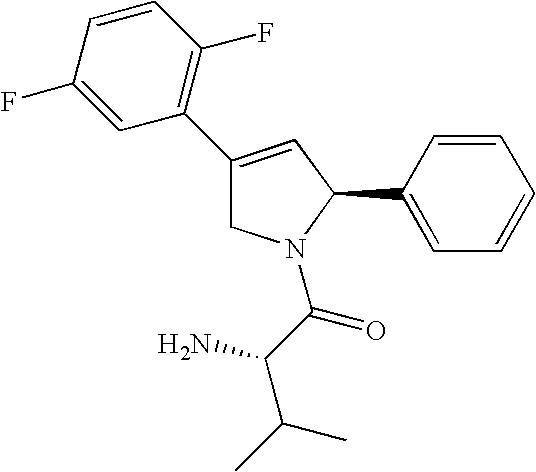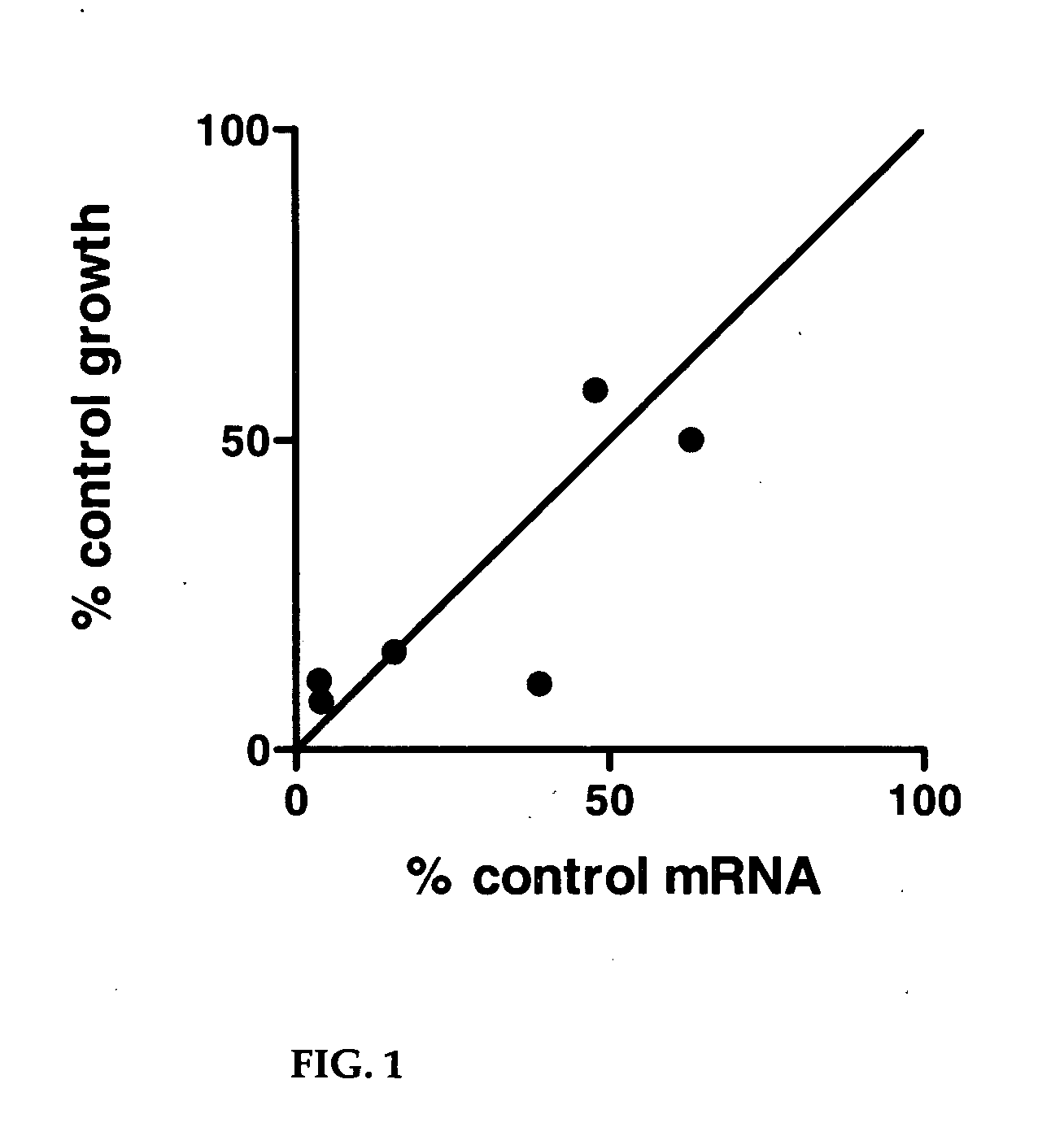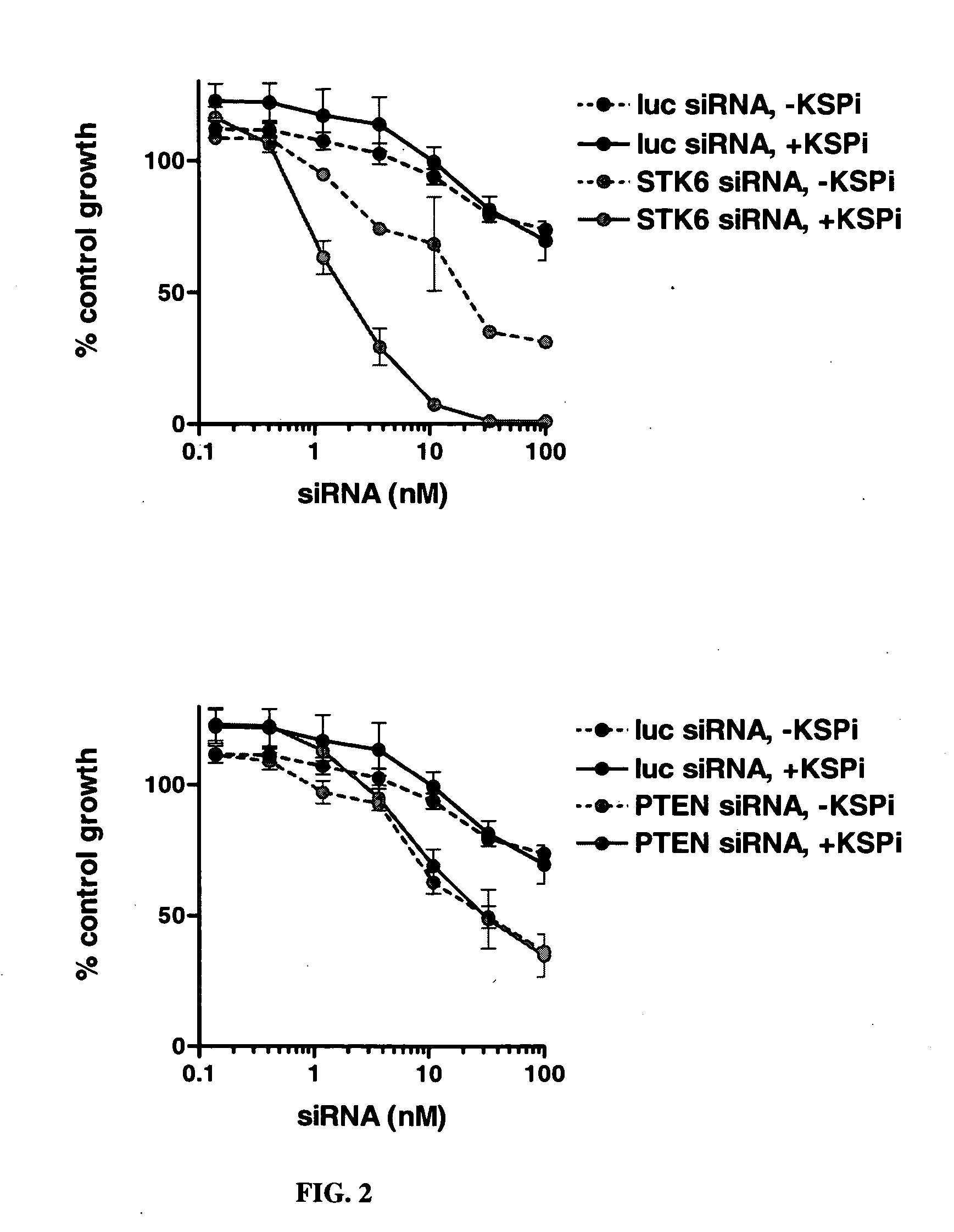Synthetic lethal screen using RNA interference
a technology interference, which is applied in the field of synthetic lethal screen using rna interference, can solve the problems of not increasing the induction of apoptosis, and the identification of the gene implicated in the phenotype is confused, so as to achieve the effect of modulating the expression of a secondary target gene and/or the activity, and enhancing the effect of said drug on said one or more cells expressing said first sirna
- Summary
- Abstract
- Description
- Claims
- Application Information
AI Technical Summary
Benefits of technology
Problems solved by technology
Method used
Image
Examples
example 1
6.1. Example 1
STK6 and TPX2 Interacts with KSP
[0403] This Example illustrates screening of an siRNA library for genes that interact with inhibitors of KSP gene. CIN8 is the S. cerevisiae homolog of KSP. Deletion mutants of CIN8 are viable and many genes have been identified that are essential in the absence (but not the presence) of CIN8 (Geiser et al., 1997, Mol Biol Cell. 8:1035-1050). By analogy, it was reasoned that disruption of human homologues of these genes might be more disruptive to tumor cell growth in the presence than in the absence of suboptimal concentrations of a KSPi. An siRNA library containing siRNAs to homologues of 11 genes reported to be synthetic lethal with CIN8: CDC20, ROCK2, TTK, FZR1, BUB1, BUB3, BUB1B, MAD1L1, MAD2L1, DNCH1 and STK6 was screened for genes that modulates the effect of a KSP inhibitor, (1S)-1-{[(2S)-4-(2,5-difluorophenyl)-2-phenyl-2,5-dihydro-1H-pyrrol-1-yl]carbonyl}-2-methylpropylamine, (EC50˜80 nM). The sequences of siRNAs targeting the ...
example 2
6.2. Example 2
Synthetic Lethal Screen Using shRNA and siRNA
[0410] This Example illustrates that simultaneous RNAi-mediated silencing of CHEK1 and TP53 leads to synthetic lethality in human tumor cells.
[0411] Two problems have limited the potential for synthetic lethal screening using RNAi approaches. First, the demonstration of synthetic lethality requires that a lethal phenotype induced by a defined gene disruption be observed in cells predisposed by a first hit gene loss or mutation but not in cells containing only wild-type alleles or protein. Thus for highly controlled experimentation, it is desirable to assay for synthetic lethality with matched cell line pairs that are isogenic except for the first hit gene disruption. For most of the available tumor cell lines, such matched cell line pairs have not been available. Second, attempts at creating two gene disruptions in cells by use of dual siRNA transfection has been hampered by the observation that siRNAs targeting distinct m...
example 3
6.3. Example 3
Genes that Enhance or Reduces Cell Killing by DNA Damaging Agents
[0419] This Example illustrates a semi-automated siRNA screens for identification of genes that enhance or reduces cell killing by DNA damaging agents. The semi-automated platform enables loss-of-function RNAi screens using small interfering RNAs (siRNA's). A library of siRNAs targeting ˜800 human genes was used to identify enhancers of DNA damaging agents, Doxorubicin (Dox), Camptothecin (Campto), and Cisplatin (Cis). In each of the screens, many genes (“hits”) whose disruption sensitized cells to cell killing by the chemotherapeutic agent were identified (see Table IIIA-C). Some of these hits (e.g. WEE1) suggest new targets to enhance the activity of common chemotherapeutics; other hits (BRCA1, BRCA2) suggest new therapies for genetically determined cancers caused by mutations in these genes.
[0420] The library of siRNA duplexes was assembled for genetic screens in human cells. One version of the libra...
PUM
| Property | Measurement | Unit |
|---|---|---|
| concentration | aaaaa | aaaaa |
| concentrations | aaaaa | aaaaa |
| resistance | aaaaa | aaaaa |
Abstract
Description
Claims
Application Information
 Login to View More
Login to View More - R&D
- Intellectual Property
- Life Sciences
- Materials
- Tech Scout
- Unparalleled Data Quality
- Higher Quality Content
- 60% Fewer Hallucinations
Browse by: Latest US Patents, China's latest patents, Technical Efficacy Thesaurus, Application Domain, Technology Topic, Popular Technical Reports.
© 2025 PatSnap. All rights reserved.Legal|Privacy policy|Modern Slavery Act Transparency Statement|Sitemap|About US| Contact US: help@patsnap.com



